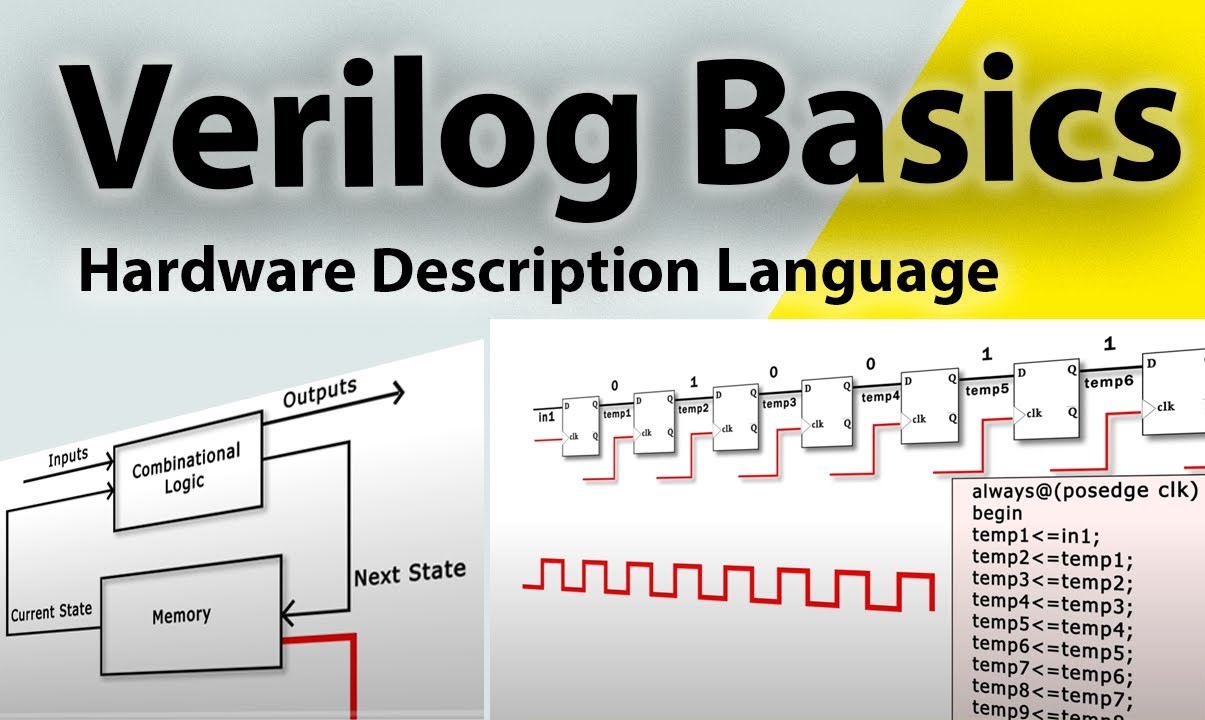
Verilog is a hardware description language (HDL) used in electronic design and engineering. It plays a pivotal role in the creation and verification of digital circuits and systems. Understanding Verilog is crucial for anyone involved in hardware design, from electrical engineers to computer scientists. In this article, we'll delve into six essential facts about Verilog that you need to know, whether you're a seasoned professional or just starting out in the field of hardware design. From its origins to its practical applications, we'll explore the key aspects of Verilog that make it an indispensable tool in the realm of digital hardware design. So, let's embark on a journey to uncover the fundamental aspects of Verilog and gain valuable insights into its significance in the world of hardware engineering.
Key Takeaways:
- Verilog is a crucial language for designing and testing electronic systems, helping engineers create and verify digital circuits at a high level of precision and efficiency.
- Verilog is widely used in the hardware industry, allowing engineers to model and simulate complex digital systems, and offering flexibility in choosing modeling approaches based on project requirements.
Verilog is a Hardware Description Language (HDL).
Verilog, often used in digital circuit design and implementation, is a hardware description language (HDL) that allows for the modeling of electronic systems. It is widely utilized in the design and verification of digital circuits at the register-transfer level of abstraction.
Verilog, also known as a hardware description language (HDL), is a crucial tool in the development and verification of digital circuits. It enables engineers to model and simulate electronic systems, facilitating the design process for hardware components.
Verilog is used for simulation and synthesis of hardware.
Verilog is employed for both simulation and synthesis of hardware designs. It enables engineers to simulate the behavior of a digital circuit before it is physically implemented, allowing for the detection and resolution of potential issues early in the design process.
Verilog is a versatile language that supports both simulation and synthesis of hardware designs. This capability empowers engineers to verify the functionality of digital circuits through simulation and subsequently synthesize the design into actual hardware components.
Verilog is an industry-standard hardware description language.
As an industry-standard hardware description language, Verilog is widely adopted in the design and verification of digital circuits. Its prevalence in the industry makes it essential for engineers and designers working on hardware development projects.
Verilog, as an industry-standard hardware description language, plays a pivotal role in the design and verification of digital circuits. Its widespread adoption across the industry underscores its significance in hardware development endeavors.
Verilog facilitates the design of complex digital systems.
With its robust features and capabilities, Verilog enables engineers to design complex digital systems with a high level of precision and efficiency. It provides a platform for modeling intricate hardware components and verifying their functionality through simulation.
Verilog empowers engineers to tackle the design of complex digital systems by providing a comprehensive platform for modeling and verifying intricate hardware components. Its capabilities are instrumental in the development of sophisticated digital systems.
Verilog supports both structural and behavioral modeling.
Verilog supports both structural and behavioral modeling of digital systems, offering engineers the flexibility to choose the most suitable modeling approach based on the specific requirements of their design projects.
Verilog offers engineers the flexibility to employ either structural or behavioral modeling approaches in the design and verification of digital systems. This versatility enables them to adapt their modeling techniques to best suit the unique demands of their hardware projects.
Verilog is an integral part of the hardware design and verification process.
In the hardware design and verification process, Verilog plays a crucial role in enabling engineers to model, simulate, and verify digital circuits. Its significance in this domain underscores its status as an indispensable tool for hardware development.
Verilog is an indispensable tool in the hardware design and verification process, empowering engineers to model, simulate, and verify digital circuits with precision and reliability. Its integral role in this domain highlights its importance in the realm of hardware development.
With its widespread adoption and pivotal role in hardware development, Verilog stands as a cornerstone in the design and verification of digital circuits. Its robust capabilities and industry-standard status make it an essential tool for engineers and designers working on hardware projects.
Conclusion
In conclusion, Verilog is a powerful hardware description language that plays a crucial role in the design and verification of digital systems. Its versatility, efficiency, and widespread adoption make it an indispensable tool for hardware engineers and designers. By understanding the key facts about Verilog, including its syntax, applications, and simulation capabilities, individuals can harness its potential to create innovative and reliable hardware solutions. Embracing Verilog empowers professionals to navigate the complexities of hardware design with confidence, ultimately contributing to the advancement of technology across various industries.
FAQs
What are the primary applications of Verilog?Verilog is widely used for designing and verifying digital circuits, including integrated circuits (ICs), field-programmable gate arrays (FPGAs), and application-specific integrated circuits (ASICs). Its applications span diverse industries such as telecommunications, consumer electronics, automotive, and aerospace.
Is Verilog suitable for beginners in hardware design?While Verilog may seem daunting at first, it offers a structured approach to hardware design and verification. With the availability of resources such as tutorials, textbooks, and online communities, beginners can gradually build proficiency in Verilog and leverage its capabilities to create complex digital systems.
Was this page helpful?
Our commitment to delivering trustworthy and engaging content is at the heart of what we do. Each fact on our site is contributed by real users like you, bringing a wealth of diverse insights and information. To ensure the highest standards of accuracy and reliability, our dedicated editors meticulously review each submission. This process guarantees that the facts we share are not only fascinating but also credible. Trust in our commitment to quality and authenticity as you explore and learn with us.


